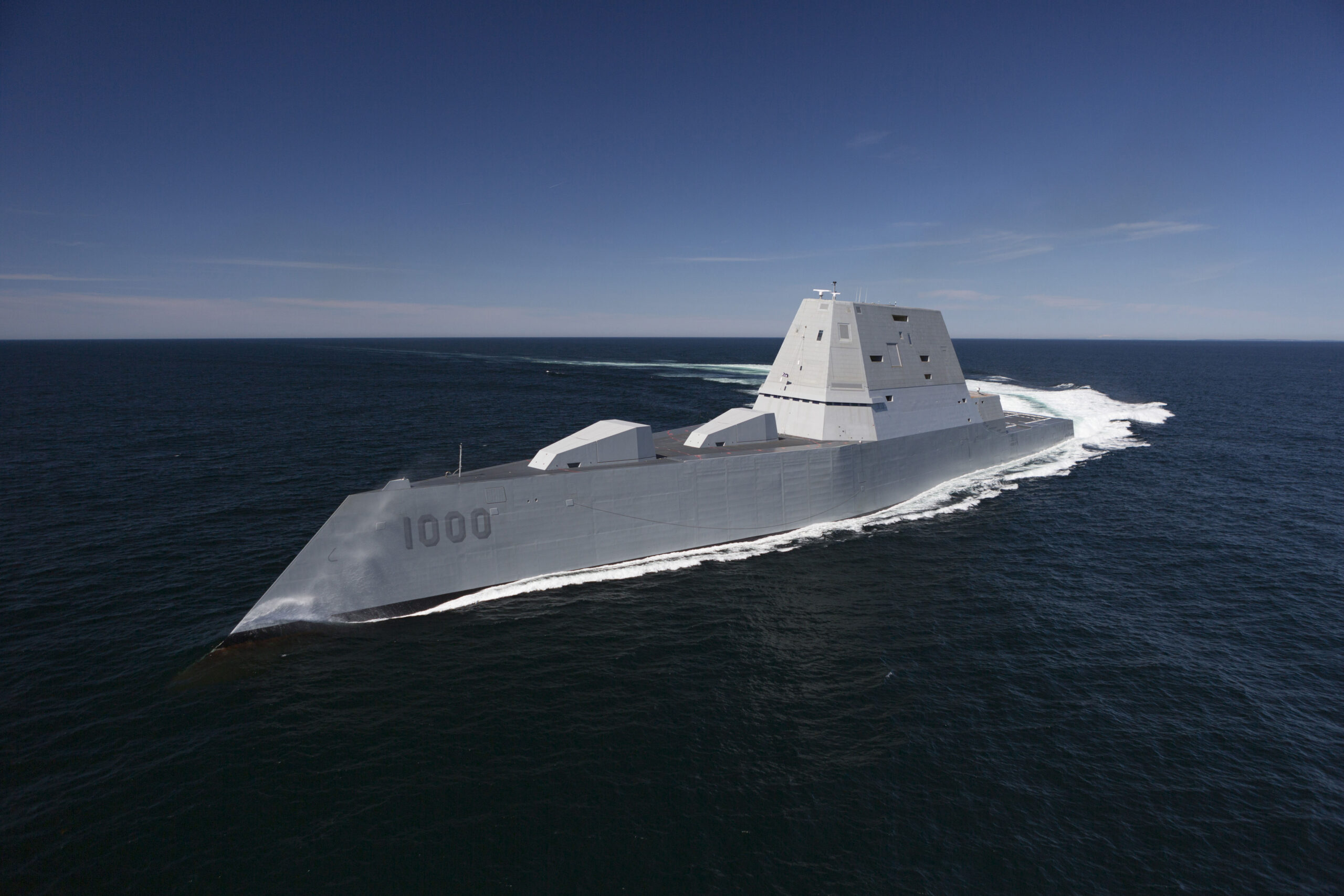
Recent trends in surface warship design
Conrad Waters
Procurement of major warships is experiencing a notable resurgence against a backdrop of increased global tensions. Some fleets are embarking on their first purchases of new-build surface combatants in recent years, whilst many others are expanding acquisition programmes to encompass several warship classes. This upturn in activity is often being accompanied by an assessment of how operational capacity can be best enhanced through the incorporation of the many technological developments of the post-Cold War era into these new ships. This article aims to examine the resultant changes in warship design that are now underway and what trends are likely to emerge in the future.
A slow evolution
The end of the Cold War brought significant changes to the world’s leading navies. For many, there was a substantial reorientation away from previous missions – for example, anti-submarine warfare for the British Royal Navy or littoral defence for the Baltic fleets – towards expeditionary and stabilisation roles. This shift was accompanied by an almost universal desire to reduce defence spending (the so-called ‘peace dividend’) that inevitably produced a dramatic slowdown in naval procurement. In addition to wholesale fleet reductions, many existing programmes were reduced in scope and new projects shelved. Whilst the major fleets did manage to maintain some new surface warship construction, acquisitions were reduced in number and typically took longer to complete than was previously the case.
This marked slowdown in construction was not fully replicated in a similar reduction in technological progress. Cold War research and development (R&D) programmes had achieved considerable momentum, allowing important development work to continue in its aftermath. Moreover, rapid evolution in civilian R&D, perhaps most notably in the field of computing, had important consequences for the defence and naval sectors. An often-cited example in the underwater field was the US Navy’s Acoustic Rapid COTS Insertion (ARCI) programme. This improved the performance of the existing sonar systems installed in submarines by periodically upgrading them with refreshed computer hardware of commercial origin that was, in turn, able to benefit from the latest software enhancements. A similar approach was subsequently taken with respect to the combat management systems used in surface warships. Clearly, this strategy was particularly attractive in a budget-conscious era by maximising the capacity of existing sensors at minimal cost.
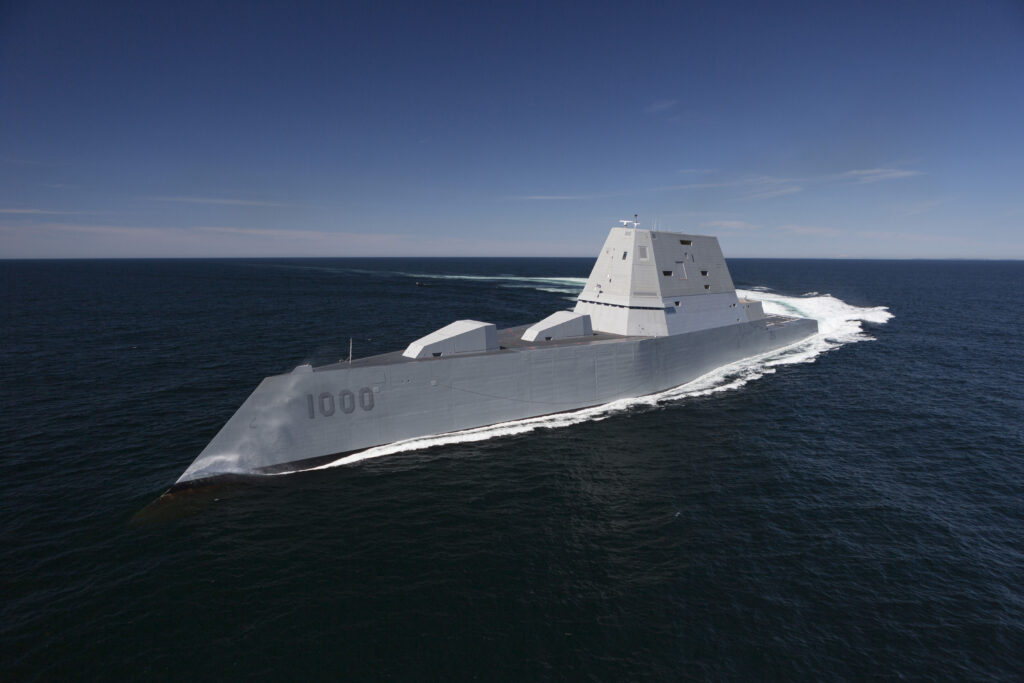
Although many of these approaches were adopted in the new warships of the post-Cold War era, the limited number and extent of active construction programmes meant that the full impact of technological change has only been slowly seen in modern warship design. Moreover, troubled implementation of some new projects – the US Navy’s Zumwalt (DDG-1000) class being the most obvious example – has resulted in legacy designs such as the Arleigh Burke (DDG-51) class remain in production with only limited adaptation. However, the increasingly pressing need to replace remaining Cold War period vessels and the additional impetus provided by renewed East-West tensions are now accelerating new construction. The result is the arrival of a new generation of warship designs that incorporate significant enhancements over their predecessors.
New naval behemoths
Perhaps the most evident design feature of the new generation of surface warships is their increase in size. Concept designs for the new German Navy F127 frigates (please see article in this edition for further information) suggest they will be naval behemoths of some 10,000 tonnes full load displacement; nearly double the weight of the F124 Sachsen class frigates that they are intended to replace. Whilst this is, perhaps, an extreme example, most current surface combatant construction programmes encompass ships that are significantly larger than their predecessors.
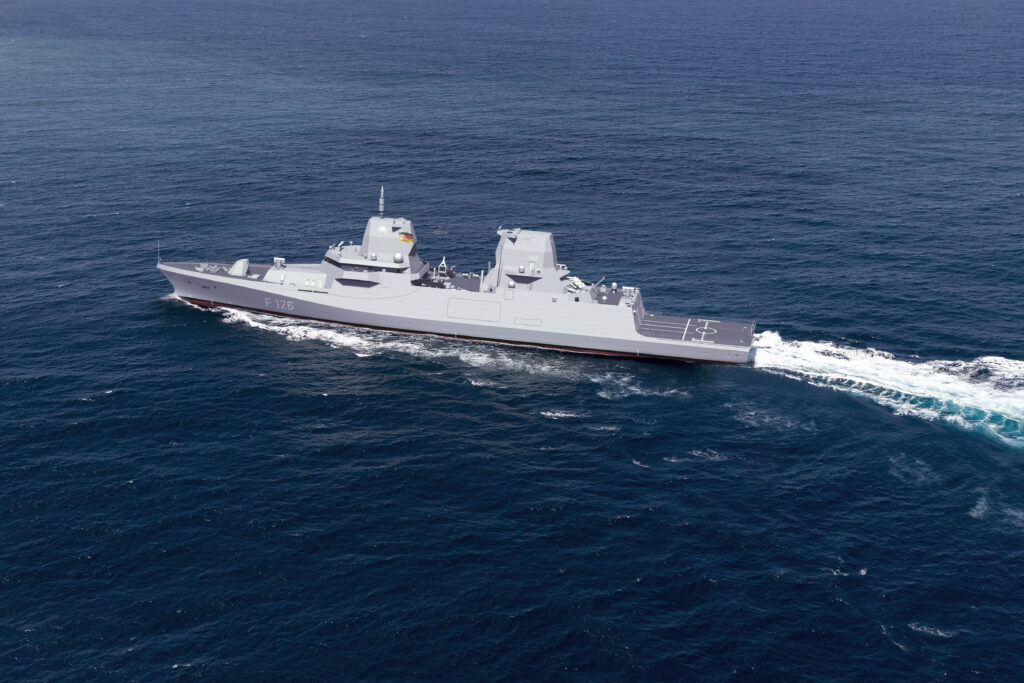
- Enhanced user requirements: In simple terms, the overall reduction seen in the number of warships in service has meant that each individual hull is expected to do more. Whilst ships may still be optimised to prioritise a particular role, such as air defence or anti-submarine warfare (ASW), the single-role warship of the Cold War era is largely a thing of the past. Most major surface combatant classes are now expected to be able to perform effectively across a broad spectrum of missions. For example, the aforementioned F127 design is not only required to provide hypersonic and ballistic missile defence in addition to its predecessors’ more limited air defence role but also has to be capable of long-range land attack, as well as to lead joint military operations. The space required for the resultant weapons and sensors inevitably requires a larger ship.
- Equipment volume: Developments in the field of technology are another factor exerting upward pressure on ship dimensions. One example is the almost universal adoption of vertical launch system (VLS) equipment, which has a marked influence on ship beam and depth in the area of installation. Similarly, increased use of relatively heavy and power-intensive multifunction radars have had implications with respect to necessary stability and power generation margins.
- Modern construction and design practices: The previously referenced adoption of modular design practices heralded by the Cold War-era German MEKO and Danish StanFlex systems has also tended to increase volume requirements. The relevant modules tend to demand more space for installation; a demand that has been further driven by the increased trend for maintenance by replacement (due, for example, to the space required for access and transportation routes). The German Navy’s recent F125 Baden-Württemberg class stabilisation frigates have taken this trend further, duplicating key systems to ensure resilience and maintained operational effectiveness on lengthy overseas deployments. The modern emphasis on visual stealth has also had implications. Notably, the angular structures typically adopted to reduce radar cross section (RCS) are not always the most efficient in maximising internal volume.
- Supporting modular equipment: Modularity is also making itself felt in terms of the need to ship and support the increasing volumes of modular, often containerised equipment that are an increasingly common element of naval operations. Most recent warship designs incorporate spacious mission bays to stow this equipment, along with cranes and other handling equipment to facilitate its rapid deployment. A good example is provided by the Italian Navy’s PPA Paolo Thaon di Revel class multi-role combat ships. These incorporate a central modular area located amidships that is sized to host up to eight ISO 1C (20 ft) containers in addition to a stern mission zone under the helicopter deck that is capable of housing a further five containers (or other equipment such as autonomous vehicles). All this inevitably makes for larger ships than those they replaced.
- Improved habitability: Although crew sizes have been reducing dramatically, particularly in European fleets, this has not been reflected in the space required for accommodation and other crew facilities. Today’s crew is typically better educated and professional than the often conscripted complements of Cold War era warships. As demonstrated by widespread recruitment and retention difficulties, such crews have much greater expectations than those of the past. This has driven demand for improved accommodation evidenced by the shift from communal to cabin berthing, often with private washrooms attached, and enhanced provision of recreational facilities. The widespread adoption of ‘mixed’ crewing has inevitably only created additional demands.

Powering the fleet
A defining feature of warship design during the Cold War era was a shift away from steam turbine propulsion in all but nuclear-powered vessels. The replacement prime movers were gas turbines and large diesels, often used in ‘and/or’ combinations. In essence, gas turbines offered high power in a compact format but were particularly inefficient at lower outputs, whilst diesels offered relatively good efficiency across a range of outputs at the expense of both size and noise/vibration. Both options offered savings in terms of manpower and maintenance compared with their steam-powered predecessors.
Improvements in diesel technology have meant that direct-drive diesel propulsion has remained a credible propulsion option in the current day. China’s extended series of Type 054A frigates and the recent British Type 31 and French FDI designs are all examples of this approach. However, there has been a notable trend towards the adoption of electrical warships, utilising either hybrid electro-mechanical or full electric propulsion. The British Royal Navy has been in the forefront of both approaches.
Hybrid electro-mechanical propulsion typically combines the use of electric motors for low speed operation, with direct mechanical drive (whether by gas turbine or diesel) being clutched in when higher speeds are required. The British Royal Navy’s Type 23 ASW frigates, which started to enter service just as the Cold War was coming to an end, were important influences in driving the popularity of this arrangement. In the Type 23s, the use of acoustically stealthy, raft-mounted diesel generators in combination with electrical motors wrapped around the ships’ shafts allowed for silent anti-submarine operation at lower speeds. These could be supplemented by gearing in two Rolls-Royce Spey gas turbines to, for example, sprint to the scene of a contact. This combined diesel electric and gas (CODLAG) arrangement – as well as the similar combined diesel electric or gas (CODLOG) system – is being widely adopted for ships where achievement of a low acoustic signature is a primary objective.

Changes in propulsion technology have been accompanied by the widespread introduction of integrated platform management systems (IPMS) to simplify machinery control and automate damage response.
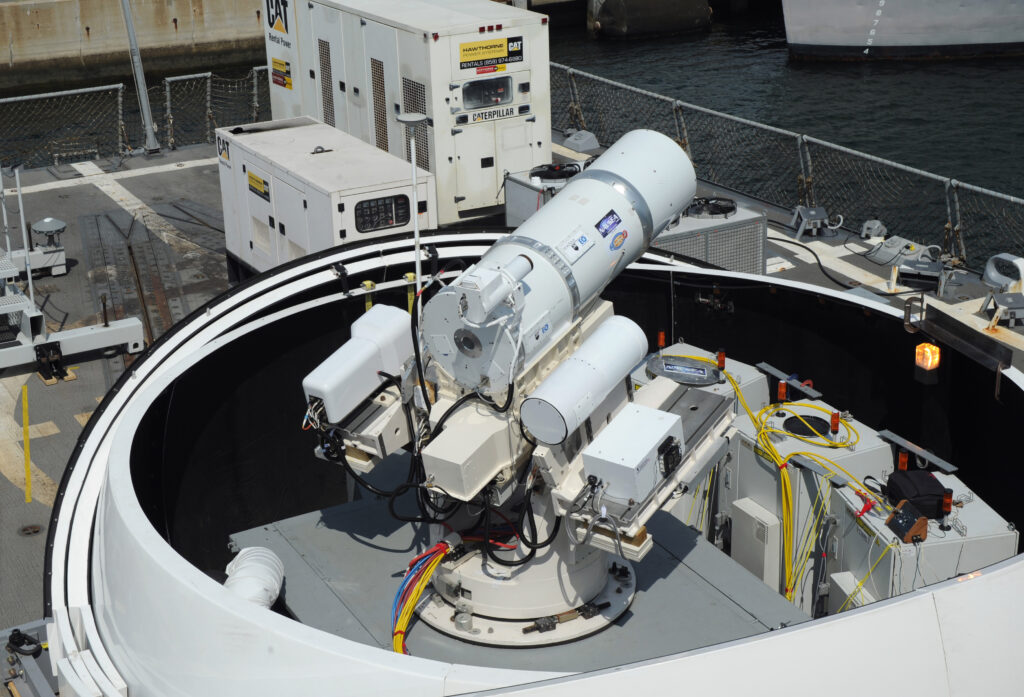
An integrated response
Turning to combat management and weapon systems, a fundamental but less visually apparent development has been the progress achieved in effectively integrating the tactical picture provided by surface warships’ combat management systems (CMS) with the appropriate fire control response. This was heralded by the introduction of the US Navy’s automated Aegis weapon system in USS Ticonderoga (CG-47) as long ago as 1983. However, Aegis’ capacity has only been fully replicated across the major fleets in recent years. The expansion of CMS capability has been aided by the rapid pace of development in commercially-derived computing power over recent decades, as already previously referenced. This change has been accompanied by a switch from centralised computing networks – in which consoles, sensors and weapon systems are connected to one or more centralised computers in a star architecture – to distributed architectures that disperse computing power around a local area network (LAN). Such distributed systems avoid the single point of vulnerability inherent in using a centralised computer and are typically considerably easier to upgrade.
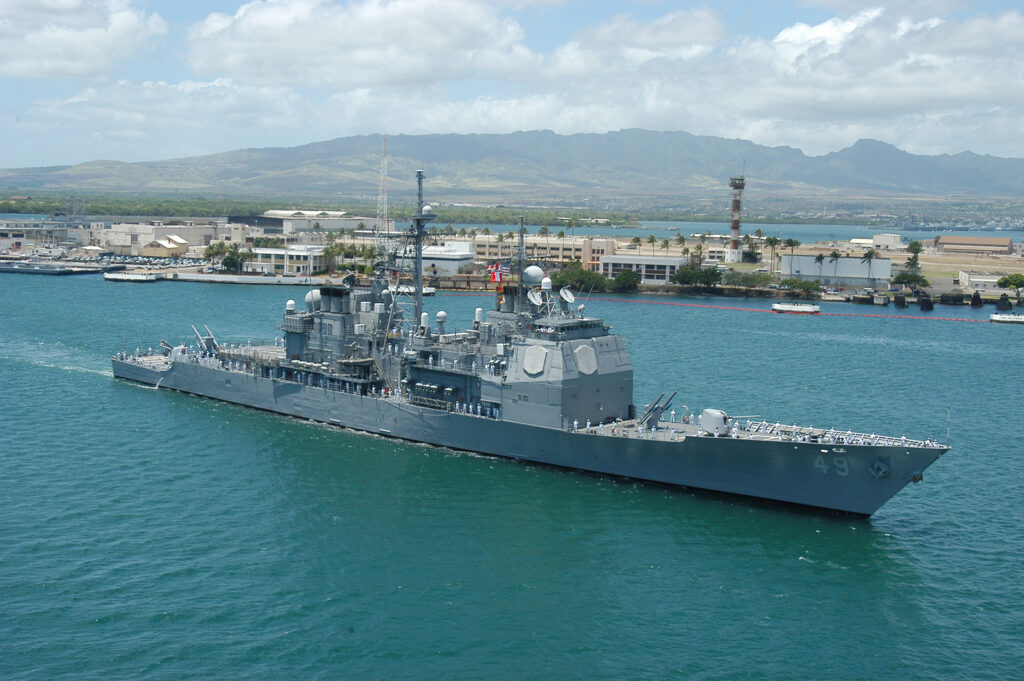
The way that information in combat management centres is displayed is also evolving. Whilst CMS consoles are now an almost ubiquitous feature of all operations rooms, much effort is being expended on improving their utility. For example, some manufacturers have supported a shift from multiple screen displays to a single, reconfigurable large screen on the basis that operator experience suggests that this is more user-friendly. There is also increasing use of electronic tactical display tables to assist the command team’s situational awareness. In the new Japanese Mogami (FFM-1) class frigates, this effort has extended to the use of a 360° wrap-round panoramic display screen that can be used to display a wide range of information.
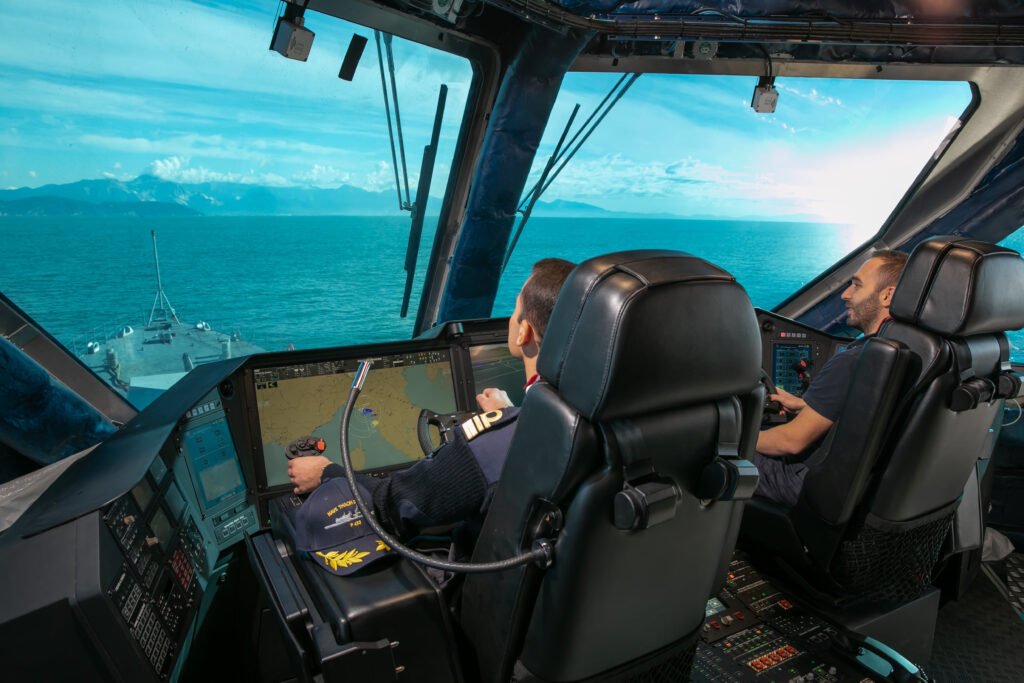
An autonomous future
Future developments in surface warship weaponry will likely be driven by the need to counter the sheer volume of threats faced by vessels operating in combat zones. These include the proliferation of anti-ship cruise and ballistic missiles (including hypersonic weapons), as well as the growth in aerial and surface drones. Countering the missile threat is driving a trend to increasing VLS capacity, as evidenced by the 112 cell installations in China’s Type 055 ‘Renhai’ class destroyers and similar increases in the latest European designs. This will inevitably place further upward pressure on warship dimensions in the absence of mitigating measures, such as the use of quad-packed cells in Mk 41 launch systems equipped with the American Evolved Sea Sparrow Missile (ESSM). Missile and gun defences will also be increasingly supplemented by directed energy weapons, which may well become the weapon of choice to defeat less sophisticated drones. The British Royal Navy, for example, recently announced plans to accelerate the introduction of ‘DragonFire’ laser weapons aboard its surface warships, with four vessels scheduled to be equipped with the system as early as 2027.
Upgrades in weapon capacity will also be accompanied by similar enhancements to sensors and combat management systems. Cooperative engagement capability – which integrates weapons and sensors across ships and aircraft to provide a single, distributed air defence capacity – is already well established in the US Navy and is steadily being introduced in other fleets. Whilst subject to a degree of secrecy, it also seems inevitable that combat management will benefit from steadily increasing use of artificial intelligence (AI). The ever-increasing pace of naval warfare, such as the advent of hypersonic weaponry, coupled with the sheer volume of data now available, is already stretching the ability of personnel to react in a timely and effective fashion. The use of AI to enhance the interface between operators and systems is the obvious way to resolve this problem. Many leading navies already have active development programmes in this area.

Conrad Waters
Author: Conrad Waters is a naval and defence analyst. He is editor of Seaforth World Naval Review, Joint Editor of Maritime Defence Monitor and a regular contributor to other Mittler Report publications.



